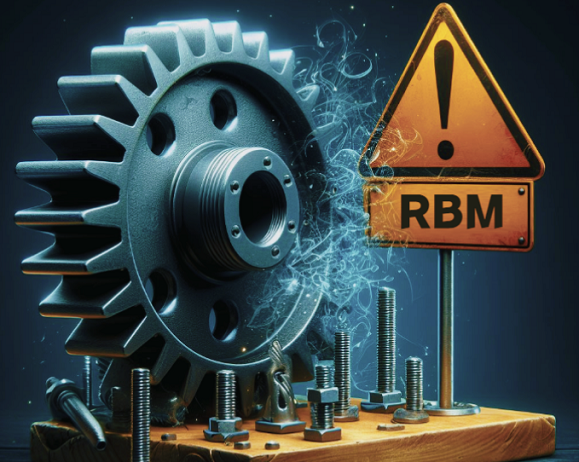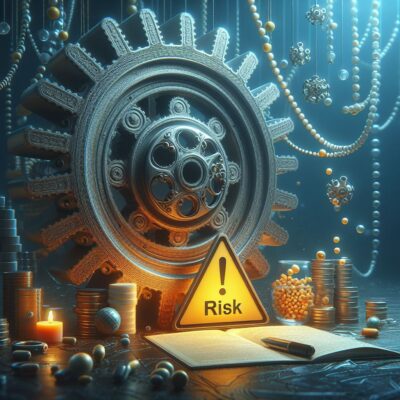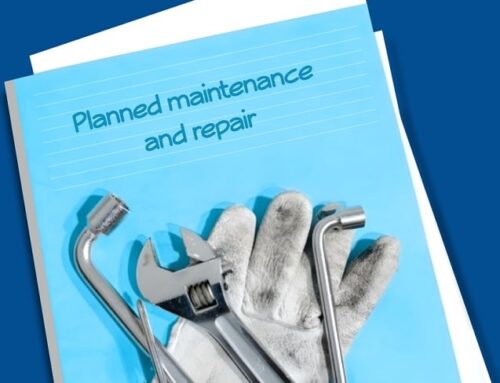Risk Based Maintenance and repair (RBM)
What you read in this article:
Risk Based Maintenance and repair (RBM)
Can risk based maintenance and repair be used in all industries and organizations?
Risk analysis for technical systems
Risk management solutions for technical systems
Information needed for risk analysis in RBM
Existing standards and guidelines for risk management in technical systems
Methods to determine the importance and priority of risk management solutions
Risk Based Maintenance and Repair(RBM) is a management method based on risk analysis, planning and implementation of maintenance and repair activities. The main goal of RBM is to optimize costs and improve the efficiency of technical systems against risks and failures.
In risk based maintenance and repairs, instead of planning repairs based on a fixed schedule(such as preventive maintenance and repairs of PM), risk analysis is used to determine the time and type of maintenance and repair activities. This risk analysis includes evaluating the probability and impact of risks, evaluating the technical status of systems, analyzing weaknesses and possible threats. Based on this analysis, maintenance and repair activities are determined on the systems.
-
Advantages of using RBM:
- Cost optimization: By using risk based maintenance and repairs, maintenance costs can be improved. Instead of periodically scheduled repairs and constant replacement of parts, maintenance and repair activities are planned based on the risk and technical status of the systems, which saves repair costs and prevents unnecessary breakdowns.
- Increasing productivity: by determining the time and type of maintenance and repair activities based on risk and technical status, the productivity of systems increases. This method improves the process of maintenance repairs and prevents sudden failures, which increases the useful life of the systems.
- Optimal risk management: Risk based maintenance and repairs allow managers to accurately identify risks that cause system failures and warnings, and manage maintenance and repair activities based on risk prioritization.
-
Can risk based maintenance and repair be used in all industries and organizations?
Yes, RBM can be used in all industries and organizations. The principle of risk based maintenance and repairs is to manage risks in the organization based on a detailed and comprehensive analysis of existing risks. This approach is applied in every type of industry and organization and aims to improve security and reduce related risks.
In general, RBM can be used in various industries including information technology, finance, healthcare, energy, transportation, manufacturing, etc. In every industry, there are specific risks that can be identified and managed using RBM.
For example, in the IT industry, risk based maintenance can improve network security, data protection, access management, and cyber threat prevention. Also, in the financial industry, RBM can help manage financial risks and manage the security of banking and financial activities.
The most important point is that RBM should be customized according to the specific needs and characteristics of each organization and industry. This means that the RBM approach should be adjusted according to the business environment, organizational goals and relevant laws and regulations.
Therefore, by using RBM, organizations can identify and manage relevant risks in any industry to improve the organization’s security and performance.
-
Risk analysis for technical systems
To perform a risk analysis for technical systems, you can follow the following steps:
- Risk identification: First you need to identify the possible risks that can affect performance. These risks can include environmental, technical, operational and human factors. Examples of possible hazards include power surges, misuse of equipment, component failure, improper shipping, etc.
- Assessment of probability of occurrence: For each identified risk, you must assess the probability of its occurrence. This probability can be determined based on past experiences, statistical data, synergistic analysis and sequence of events analysis.
- Impact Assessment: Next, you need to assess the impact of each risk occurrence on the technical systems. This includes analyzing the direct and indirect impact on systems performance, safety, productivity and costs.
- Risk prioritization: By combining probability of occurrence and impact, you can rank risks based on their priority and importance to technical systems. This helps you focus your resources and time on higher risks.
- Determining risk management solutions: For each identified risk, you must determine management solutions. This can include preventive measures, training and awareness of personnel, use of modern technology and limiting access to dangerous areas.
- Forecasting and monitoring: To manage risks, you may need to continuously forecast and monitor risks, which includes monitoring key indicators, regular testing, failure prediction and the use of warning systems.
-
Risk management solutions for technical systems
Determining risk management solutions for technical systems requires an organized method. Below, I’ll give you some general steps for determining risk management strategies:
- Risk identification: First, you must identify possible risks that can damage technical systems. This includes technical, environmental, operational and human risks. To identify risks, you can use different methods such as using past experiences, document review, employee participation, and using analytical methods such as event description.
- Risk assessment: After identifying the risks, you must evaluate how likely each risk is to occur and what effect it has on the technical systems. To assess risk, you can use different methods such as probability-impact matrix and analysis of the sequence of events.
- Determining risk management strategies: After assessing the risks, you should determine the appropriate strategies to manage each risk. These strategies can include preventive, protective, crisis response and reconstruction measures. You can use industry standards, guidelines, and experience to determine risk management strategies. Also, the participation of relevant employees and experts can also help in determining effective solutions.
- Prioritization of solutions: To allocate resources and optimal time, you must arrange risk management solutions based on importance and priorities. At this stage, you can use methods such as Priority-Severity Matrix, Cost-Benefit Analysis and Residual Risk Analysis.
Finally, it is best to consult with relevant professionals and other managers in your organization to obtain specific risk management approaches and methods that are appropriate based on your organization’s needs.
-
Information needed for risk analysis in RBM
For risk analysis in risk based maintenance and repairs, a set of information related to existing technical systems and processes is needed. Below, some important information for risk analysis in RBM can be mentioned:
- Identification of systems: You need to identify the systems and technical infrastructure in the organization. This includes operating systems, networks, servers, applications, and other equipment.
- System documentation: Information on systems documentation, including instructions, drawings, diagrams, technical specifications, and manuals, is very useful for risk analysis in RBM. This documentation can help you understand how systems work and their dependencies.
- Data analysis: Reviewing available data and information about systems performance history and past events can provide useful information for risk analysis in RBM. This includes system performance data, logs, reports and other information.
- Vulnerability assessment: Examining possible vulnerabilities in technical systems and processes is a good starting point for risk analysis in RBM. This includes security assessment, penetration testing, security scanning and other similar activities.
- Threat Analysis: You must identify and analyze security threats and possible risks. This includes threats related to intrusion, data theft, eavesdropping attacks, system crashes, and other security threats.
- Importance assessment: For risk analysis in RBM, you need to determine the importance of technical systems and processes. This includes assessing the impact of events, assessing access and financial, operational and other possible impacts.
- Standards and regulations: Reviewing security standards, laws and regulations related to your industry and organization is also important for risk analysis in RBM. This includes international standards such as ISO 27001, NIST SP 800-53, and local legal regulations and regulations.
In general, for risk analysis in risk based maintenance and repairs, you must collect and analyze information related to system identification, system documentation, data analysis, vulnerability assessment, threat analysis, importance assessment, and standards and regulations. This information will help you to identify and evaluate possible risks and adopt appropriate strategies to manage them.
-
Existing standards and guidelines for risk management in technical systems
For risk management in technical systems, there are several standards and guidelines that help organizations develop better approaches and processes for risk management. Below, I mention some of these standards and guidelines:
- ISO 31000 standard: This standard for risk management in organizations was prepared by the International Organization for Standardization(ISO). This standard provides methods and processes for identifying, evaluating, managing and reducing risk in organizations.
- ISO/IEC 27005 standard: This standard helps information security managers and professionals improve information security through risk management approaches. This standard focuses on methods and approaches related to risk assessment in organizations.
- COSO ERM Guide: This guide was prepared by the Committee on Security of Industrial Organizations(COSO) and can be used for risk management in organizations and companies. This guide includes the processes, objectives and methods used to identify, assess and manage risks in organizations.
- NIST Guide SP 800-30: This guide was prepared by the US National Institute of Standards and Technology(NIST) and is used to assess and manage information risk in organizations. This guide includes processes and methods used to identify, assess and mitigate risks in organizations.
These are just a few examples of standards and guidelines used in risk management in technical systems. Also, depending on the industry and type of organization, other standards and guidelines are available that may be more responsive to your organization’s specific needs.
-
Methods to determine the importance and priority of risk management solutions
Different methods and processes can be used to determine the importance and priority of risk management solutions. Below are some common methods for determining the importance and priority of risk management solutions:
- Analysis of value and importance: In this method, each risk is evaluated based on two factors: Value and Importance. Value usually means the financial, operational, strategic, or other significant value effects that the risk affects. Significance indicates the importance of the risk to the organization. By combining these two factors, risks can be ranked based on their importance and priority.
- Effect probability matrix: In this method, we examine the probability of risk occurrence and its effects on the organization. We place the risks in a matrix by measuring the probability of risk occurrence(probable probability, average probability, etc.) and its effects on the organization(financial, operational, strategic effects, etc.). This matrix helps us put the risks into four prioritized groups(such as high-high, high-low, low-high and low-low).
- Parametric analysis method: In this method, statistical and experimental analysis is used to check and prioritize risks. Usually, by collecting data and statistics related to risks, we estimate the probability of occurrence and effects, and then, using statistical models and methods, we rank risks based on importance and priority.
- Multi-criteria decision-making method: In this method, several criteria are used to evaluate risks. Possible criteria include financial effects, operational effects, strategic effects, financial value, strategic importance, etc.
In general, risk based maintenance(RBM) is a strategic approach that provides cost optimization and performance improvement of systems throughout their technical life using risk analysis. This method is used as a preventive approach in maintenance management and helps companies to improve their resources and reduce unnecessary risks and breakdowns.











